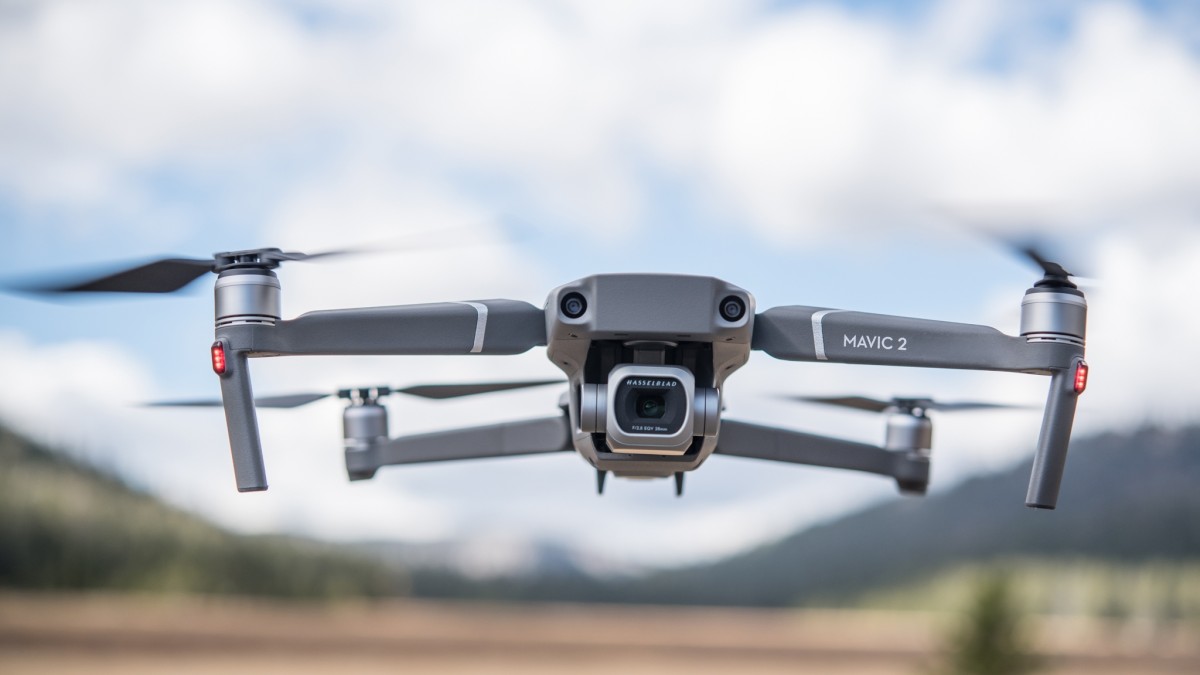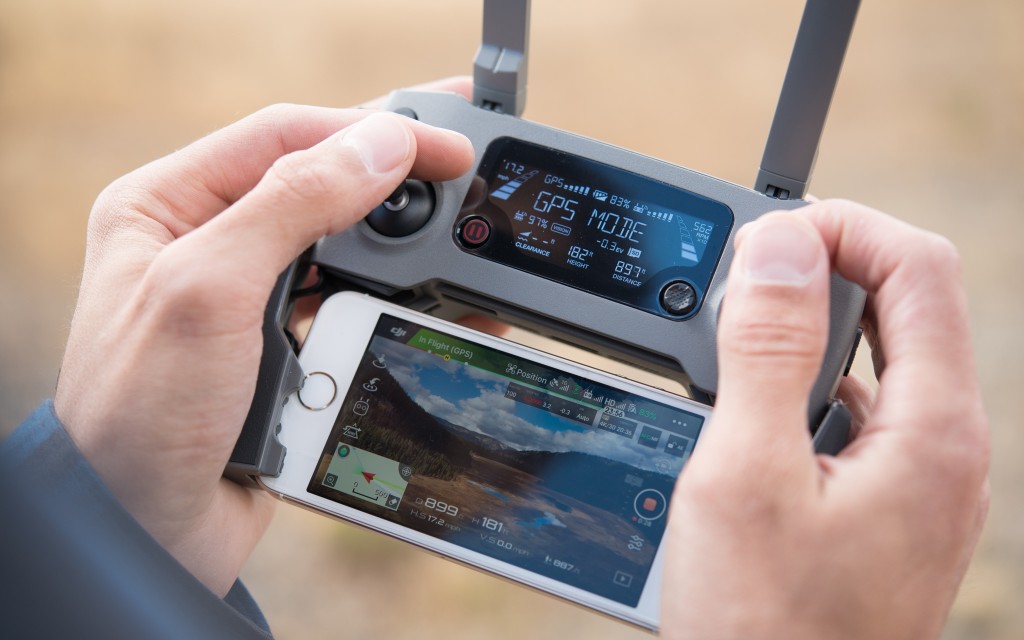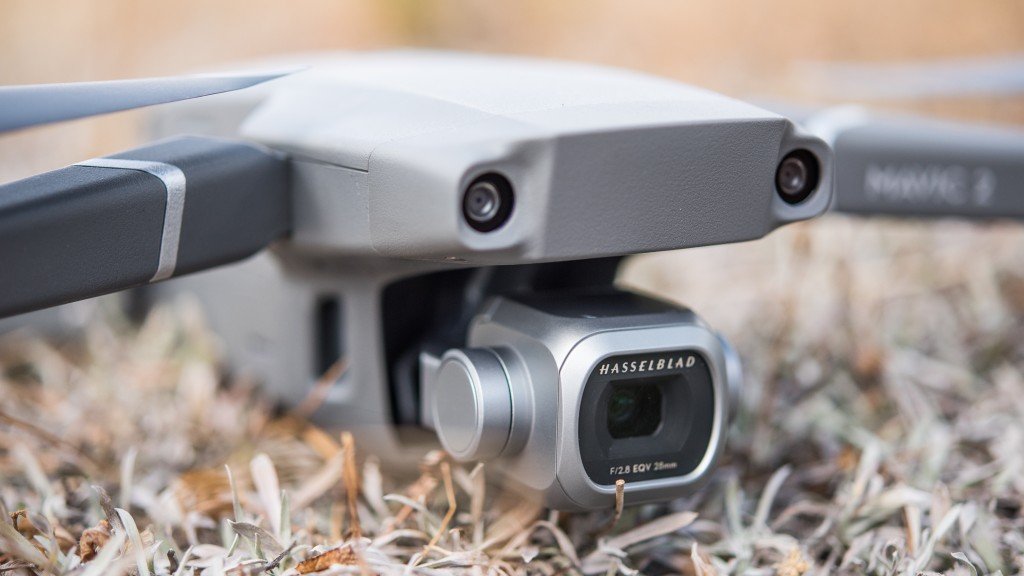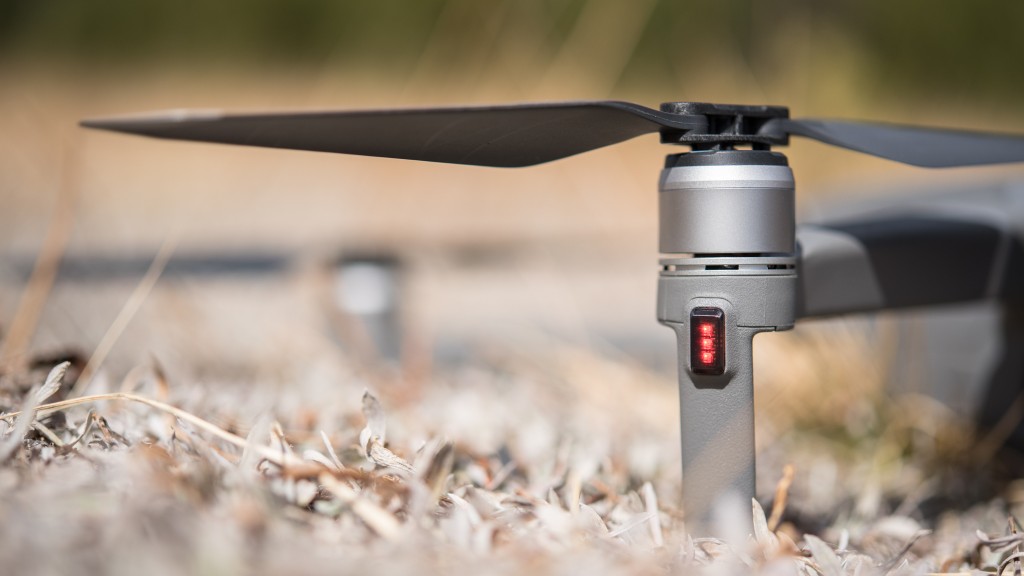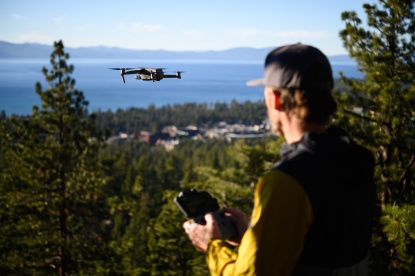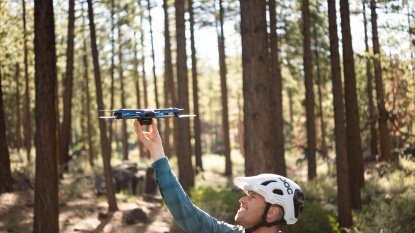Our Verdict
Our Analysis and Test Results
The Mavic 2 Pro is an industry leader for consumer camera drones. DJI has somehow stuffed all of the video quality and flight performance of its larger models line into a tiny, foldable, 2-pound device with exceptional performance. If the price tag doesn't scare you away, this is an exceptional choice.
Performance Comparison
Video Quality
The Mavic 2 Pro really shines here, with its Hasselblad camera and 1-inch sensor. It produced among the best video in our testing.
In general, the Mavic 2 Pro footage we captured brought out more detail than any of the other models we tested. This was particularly true in very bright or dark areas. For example, most cameras turned shaded valleys into a somewhat muddled mess of green, while the Mavic 2 Pro was able to bring out the details of individual tree branches. Brightly lit mountain slopes generally got slightly washed out by most cameras, but this one produced specific contours of snow and rock. The overall picture was also a bit sharper and contained more contrast than what we got from most other models.
At its full 4K resolution, the camera on the Mavic 2 Pro maxes out at 30 frames per second. If you'd like to shoot at a higher framerate so you can slow your footage down in the editing room, you'll have to drop to 2.7K or 1080p resolution, both of which allow you to crank the framerate up to 60 frames per second.
The Mavic 2 Pro is one of the few DJI drones that allows for full adjustment of the aperture from f/2.8 to f/11. This helps deal with lens flare when filming into the sun and lets you get better quality lowlight images.
Additionally, the Mavic 2 Pro is the first of DJI's consumer-level drones to offer 10-bit DLog-M recording. We don't need to get into the nitty-gritty, but this format essentially makes it easier to edit the footage in post processing to bring out better color and dynamic range without losing any quality or clarity. If you're familiar with photography, it's analogous to shooting in RAW, but for video. Harnessing the power of 10-bit requires some advanced video editing software and some know-how, so it's not exactly a beginner-friendly feature, but it does bring the video capabilities of the Mavic 2 Pro more in line with professional level drones. It also gives you some room to grow and experiment if you're looking to make this filmmaking thing more than a hobby.
Flight Performance
A flagship model in the DJI line, the Mavic 2 Pro offers field-leading flight performance and is a pleasure to fly. It is incredibly stable during takeoff and landing, stops on a dime, responds quickly, and accelerates like a cheetah. We think even first-time pilots will find this drone to be intuitive and easy to zoom around. It sports a maximum flight time of 31 minutes.
The Mavic 2 Pro has pretty much the same bevy of autonomous flight modes that previous models have had, including cable cam, orbit, and return to home. We found all of these modes to function quite well, just as well as previous iterations. The one place where this iteration improves performance is in its automatic follow function, which can identify a subject and then have the drone autonomously follow it. We found that this drone was better at automatically keeping a moving subject in the frame than its predecessors. For a fast-moving subject, like someone on a bike, you'll probably still get better footage by using an actual pilot, but solo adventurers who want to film themselves will likely get better results from the Mavic 2 Pro than they did previously.
This drone has a multitude of obstacle avoidance sensors, but those sensors have some limitations you have to keep in mind. While the Mavic 2 Pro can technically sense obstacles in all six directions, the left/right obstacle avoidance only works when in certain autonomous flight modes, so you don't get quite as much crash protection as you may expect during normal flight. Still, this is better than the vast majority of products out there today and gave us quite a bit of peace of mind.
Portability
Part of what makes the Mavic 2 Pro such a revolutionary drone is its small stature. Weighing just 2 pounds and folding up into a package that is about the size of a 40oz water bottle, you can easily take this drone pretty much anywhere you want.
The Mavic 2 Pro keeps the portability going with the controller. Its antennas fold down, and the joysticks unscrew and store in internal slots, resulting in a streamlined package with about the footprint of a standard smartphone, just with a bit more thickness. We had no problem fitting both the controller and drone into small daypacks, making this a highly portable option for capturing high-quality video.
Ease of Use
Like all DJI models, the Mavic 2 Pro offers a fairly easy setup process, intuitive controls, and a clear user interface. We highly doubt anyone will have difficulty getting this device in the air and recording great footage.
The controller maintains a slim profile while still offering long joysticks with textured tips. The slot below the controller easily clamps down on most phones and holds them securely, and the short phone connection wires keep tangles to a minimum.
The only small area where the user experience of the Mavic 2 Pro could be improved is in its video screen. Like the vast majority of drones out there, this one requires that you hook a phone or tablet to its controller in order to see the video feed and access some touchscreen controls. This is completely fine, but we could see a built-in screen being a nice addition, though it might make the controller slightly less portable.
Value
The Mavic 2 Pro is one of the most expensive consumer drones around. However, if you're looking for top-quality video in a portable package, it is worth every single penny, as it delivers on all of its promises.
Conclusion
The DJI Mavic 2 Pro is a gold standard in consumer drones, offering field-leading video quality and flight performance in a package that can be toted along in a backpack.


